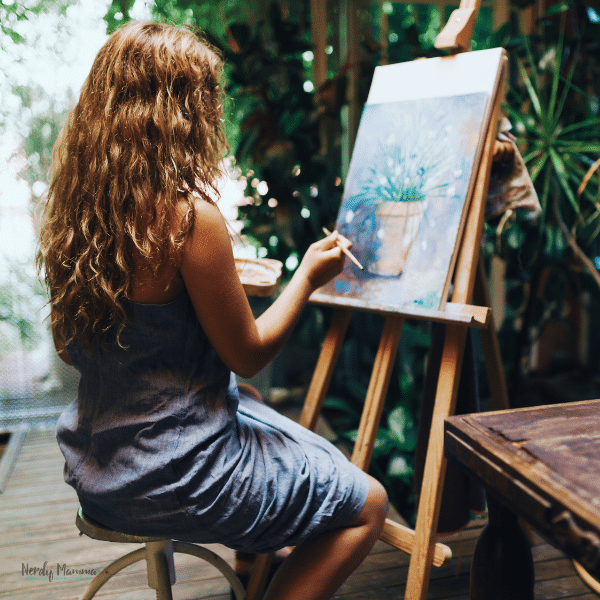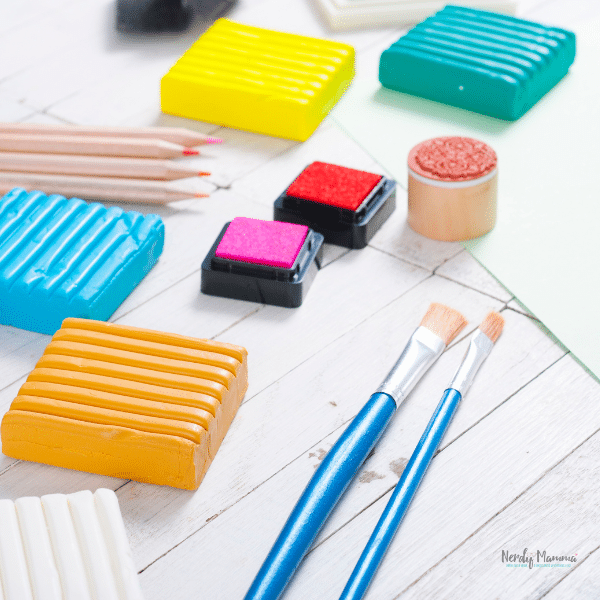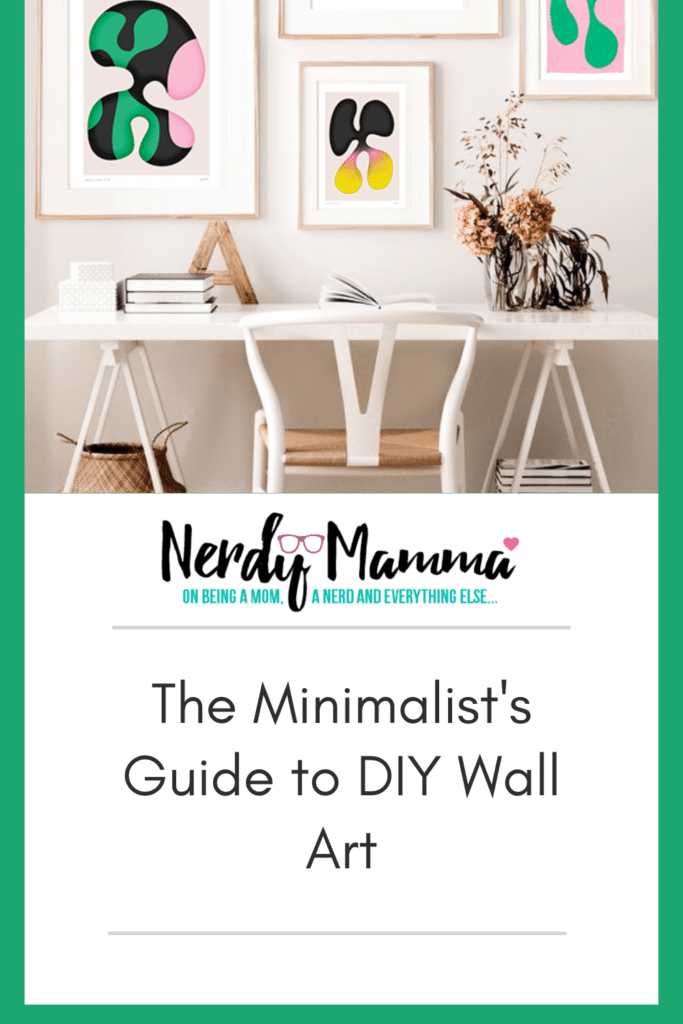Walls whisper the story of a space. A blank canvas invites endless possibilities, beckoning you to make your mark in a way that resonates with your personal aesthetic.
Art need not be expensive.
Creating your own wall art is akin to speaking a visual language that’s uniquely yours. It’s simpler and more profound than you might initially think.

Understanding Minimalism
Minimalism is more than an aesthetic; it’s a philosophy. Emphasizing simplicity and intentionality, it strips away excess to reveal the beauty of bare essentials. This style thrives on the ‘less is more’ principle. It challenges us to find elegance within restraint.
Minimalist art uses limited elements to convey a message, relying on space (often white space) and minimal color palettes to communicate. The focus is on shape, color, and texture rather than ornate design. It invites contemplation, allowing the viewer’s imagination to project meaning.
Creating minimalist art means understanding the value of negative space, the potency of subtle variations in tone, and the impact of simple lines that define a form.
Embrace minimalism in DIY projects by choosing quality over quantity. Carefully select a few elements that speak volumes rather than filling space with excessive details.
Planning Your Minimalist Wall Art
In approaching your minimalist wall art, meticulous planning is key. Start by contemplating the desired ambiance for the room—serene, contemporary, perhaps provocatively sparse. Then, syncing with that vision, choose a constrained color scheme and a singular, potent focal point.
Identify where the art will live on your wall and measure the space generously. The size of your piece should harmonize with its surroundings, creating a delicate balance rather than overwhelming or being dwarfed by the wall.
Choosing Your Color Palette
Selecting your colors is akin to choosing the right spices for a meal; they set the tone and flavor of your visual feast. Opt for hues that align with the room’s existing palette to ensure a cohesive look that echoes its ambiance.
In minimalist design, less is more, so consider employing a monochromatic scheme for your wall art. This can create depth and interest without the visual noise commonly found in more complex color arrays.
When finalizing your color selections, envisage the interplay of light and space. How do hues shift with the day’s rhythms? The interaction between natural light and color can transform the mood of a piece and, by extension, the room it adorns.
Incorporating paintings for the living room into your decor is a sophisticated way to enhance this dynamic, offering both versatility and a unique aesthetic touch to your home environment.
Selecting the Right Materials
The materials you choose set the stage for durability and visual appeal.
Consider these essential materials
- Canvas: Timeless and versatile for painting.
- Wood: A sturdy base for those who favor rustic charm.
- Metal Sheets: For a sleek and modern look.
- Acrylic Sheets: Ideal for a clean, contemporary style.
- Reclaimed objects: Perfect for adding texture and storytelling.
- Quality Paints: Crucial for longevity and color vibrancy.
- Adhesives: Ensure they are suitable for your chosen medium and wall type.

Step-by-Step DIY Minimalist Art Projects
Follow these detailed steps to transform simple materials into stunning minimalist art pieces:
- Step 1: Choose Your Base:
- Decide on a canvas, wood panel, metal sheet, or any other surface you find intriguing for your art project.
- Step 1: Design with Tape:
- For geometric designs, use painter’s tape to create shapes directly on your chosen base.
- Consider a monochrome or duo-tone color scheme to keep things minimalist yet captivating.
- Step 1: Painting:
- Apply your paint in smooth, even layers within the taped areas.
- Once dry, gently remove the tape to unveil sharp, defined edges.
- Step 1: Experiment with Everyday Items:
- Look at ordinary objects through an artistic lens. A metal sheet, for instance, can become a dynamic piece of art.
- Use sandpaper or etching tools to inscribe your design, embracing the interplay of light and shadow.
- Step 1: Acrylic Layers:
- Cut acrylic sheets into bold, straightforward shapes.
- Stack them using spacers to add depth and dimension to your artwork.
- Step 1: Simplicity is Key:
- Focus on the simplicity and inherent beauty of your materials.
- Let the understated elegance of your design highlight the minimalist ethos.
Simple Geometric Designs
Begin with straightforward shapes like squares, triangles, and circles. Their clean lines and simple forms lend themselves well to a minimalist aesthetic. You can create pieces that resonate with harmony and balance with just tape and patience.
Select colors that evoke tranquility or vibrancy without overwhelming the senses. A muted palette often anchors the minimalist vibe.
Focus on the precision of your lines and the care in your application. Symmetry and balance are your allies, setting a rhythm in the artwork that both calms and captivates. Ensure you allow each layer of paint to dry thoroughly before adding another to avoid any unwanted blending or smudging.
The elegance of minimalist geometric art lies in its understated complexity—what appears simple at first glance often holds a deeper allure. As you peel away the tape, revealing the work’s true form, the economy of design becomes compellingly clear.
Abstract Line Art
Abstract line art thrives on the elegance of understatement. With just a few deliberate strokes, this minimalist art form can encapsulate intricate emotions and concepts within its seemingly simple constructs.
Immerse yourself in drawing freeform or structured lines that speak to you. Whether it’s freehand with a brush or more controlled with the use of masking tape, each line you create is a testament to artistic intention and purity of form.
Abstract line art invites viewers to connect their own stories and thoughts to the visual narrative. Each curve and straight line can symbolize many perspectives, depending on who is looking. It’s an intimate conversation between the artwork and the onlooker.
While seemingly random, successful abstract line art often hinges on a careful balance between movement and stillness, boldness and subtlety. It’s recommended to step back occasionally and view your piece as a whole, ensuring that it harmoniously coexists with its surroundings.
Selecting where to place your art within your living space underscores its impact. Consider the interplay of light and shadow, the wall color, and adjacent decor. Your abstract line artwork, strategically situated, becomes more than decoration—it transforms into an enduring statement of your aesthetic ethos.
Abstract Textured Pieces
Creating abstract textured pieces can be a cathartic journey, transforming ordinary materials into tactile experiences. Through the manipulation of mediums like plaster, clay, or textured paints, you can carve out a visual landscape that beckons to be touched.
In DIY art, textured pieces beckon a sensory response. They provide a canvas for experimenting with depth and shadow, allowing layers to overlap and interact. These creations transcend visual appeal, offering a three-dimensional encounter that begs for closer inspection. I
Your choice of lighting plays a critical role in showcasing these textured creations, as it can dramatically shift the perception of depth and contour. The interplay of light and shadow adds an evolving narrative throughout the day, ensuring your art never appears the same way twice.
In the end, the goal of minimalist abstract texture is to convey emotion through the physicality of the materials. Layers, depth, and the tactile nature of your work must align with the mood you intend to set.
Incorporating Personal Touches into Your Art
Your DIY wall art becomes truly one-of-a-kind when you imprint your personality onto the canvas—or wall, in this case. Whether you integrate snippets from favorite magazines, handwritten letters or poems, or elements that reflect your heritage, these personal touches invite viewers to connect with the artwork on a deeper level.
Always remember the uniqueness of your artwork is amplified by the singular elements you introduce. Think of it as infusing the essence of your spirit into the piece, anchoring it with mementos that hold a special place in your heart.
Custom Painting by Numbers
In DIY wall art, custom paint by numbers offers an inviting journey into creativity without the need for technical prowess in painting.
Consider these tips when incorporating custom paintings:
- Select a cherished personal photograph for your custom kit.
- Order the custom kit from a reputable supplier, ensuring high-quality materials.
- Carefully paint each numbered section with the corresponding colors provided.
- Revel in the gradual revelation of your masterpiece as it unfolds.

Hanging and Arranging Your DIY Wall Art
Setting up your DIY art begins with a reasonable selection of wall space, ideally one that enhances its visibility and complements its aesthetic. Remember to consider natural light sources, which can elevate the artwork’s appearance through dynamic shadows and highlights.
Mounting your creation can be accomplished with various hardware options—picture hangers, adhesive strips, or gallery-quality rail systems. Each supports your artwork in different ways, so consider the weight and material of your DIY piece to determine the most secure and wall-friendly choice.
When arranging multiple pieces, maintain a harmonious balance and rhythm, embracing negative space as an active element of your wall art ensemble.

Conclusion
We’ve traversed the landscape of minimalist DIY wall art, from conception to installation, embracing simplicity as our guide. Tranquility in minimalism is echoed through each deliberate placement, each stroke and hue speaking volumes in silence. Always remember that every choice in your DIY endeavor adds to a narrative.
Ultimately, your wall becomes a testament to the minimalist’s vision. Crafted with intention, it stands as a serene testament to the power of less. Thus, minimalist DIY wall art becomes a window through which we glimpse the artist’s soul.
